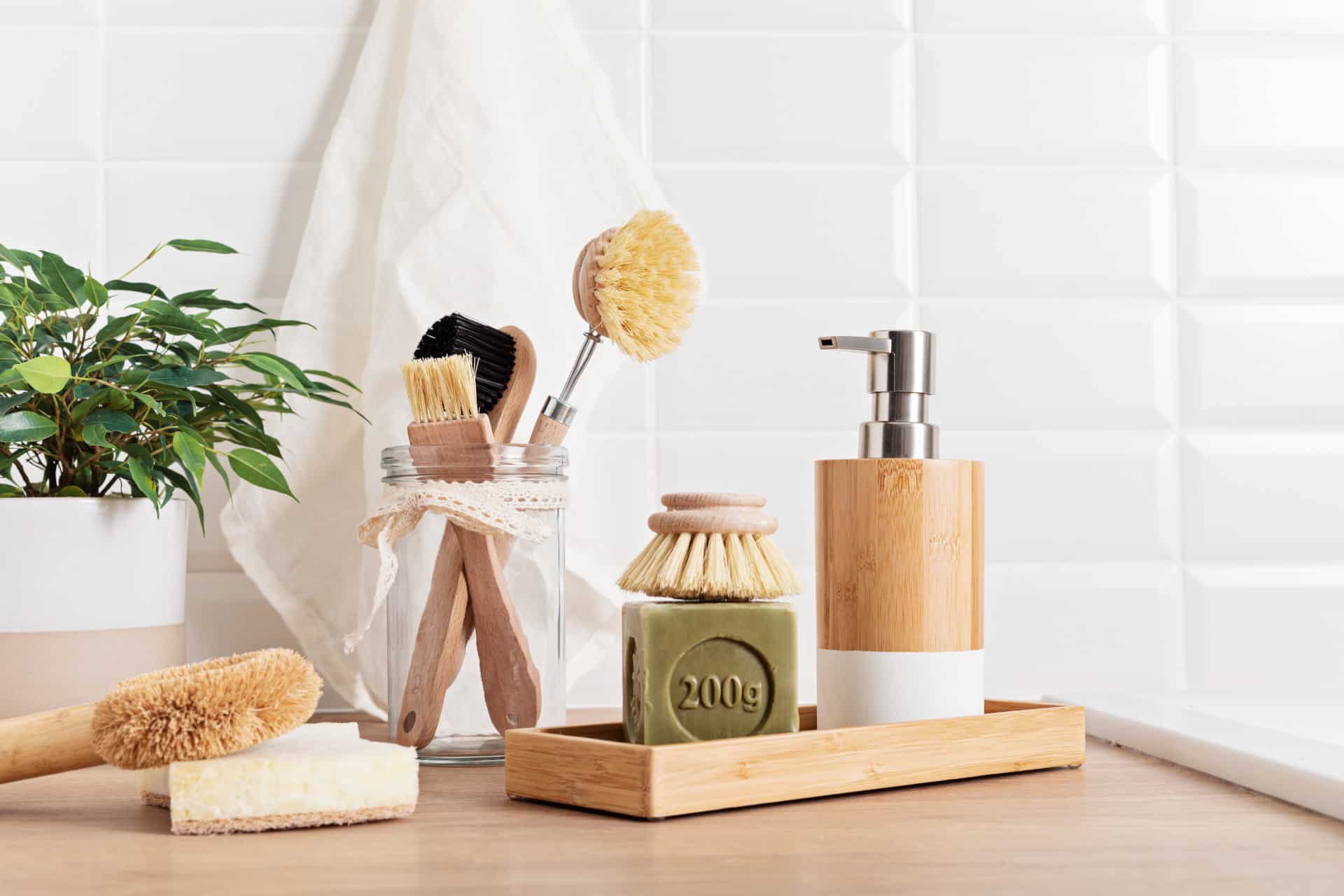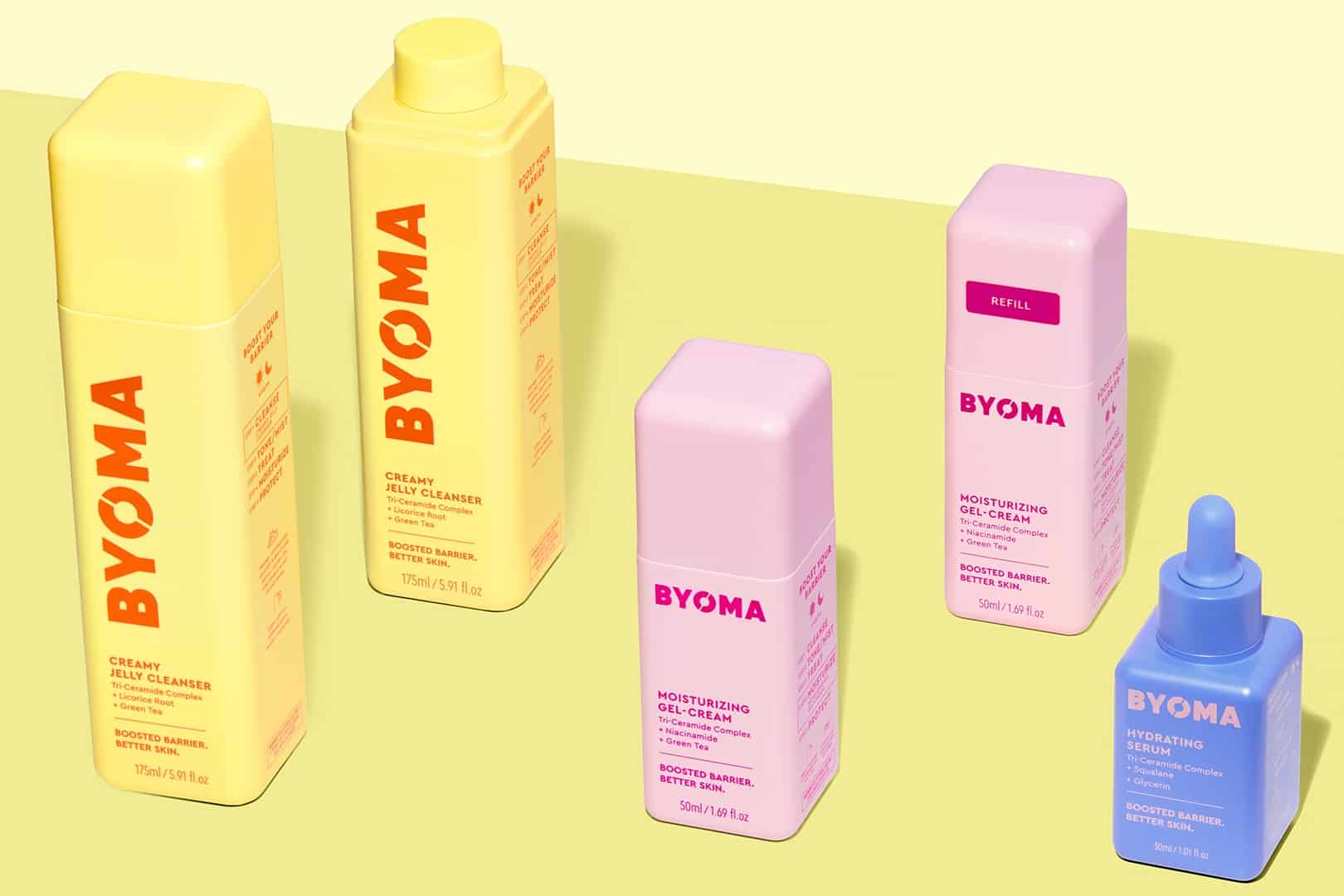We Found The Best Non-Toxic Candles For a Safer Home

Everyone loves a lovely scented candle. They mask odors, add ambience and make any room feel cozier. But, did you know that most candles on the market are full of toxic chemicals? These chemicals can cause headaches, skin irritation, and even respiratory problems.
From paraffin wax to chemical fragrances and lead wicks, there are a surprising number of toxins potentially lurking in your candles.
Let’s take a deep dive into the world of scented candles. We’ll learn what you should beware of when shopping, the possible pitfalls, and we’ll look at some of the best non-toxic candles that use all-natural scents and oils.
Paraffin Wax: When Burning Candles Is Like Burning Fossil Fuels In Your Home
Paraffin wax is the most common type of wax used in candles, and it’s made from petroleum as a byproduct of gasoline production. Paraffin wax is inexpensive and holds fragrance and color well, making it a popular choice for both big candle companies and small businesses alike.
The topic of paraffin wax is a hotly debated one. Some say that paraffin wax is perfectly safe to use, and then there are those who claim that it’s a health hazard.
It’s reported that burning paraffin wax candles causes toxic chemicals like benzene and toluene to be released into the air. So, what’s the truth?
Are Scented Candles Safe? The Biased Studies That Make It Confusing To Tell
Several studies have concluded that burning paraffin wax candles is safe, and many conclude it’s unsafe. The details become even more unclear when you dig into the actual studies and who is behind them.
An oft-referenced study published in 2014 (1) concluded that “under normal conditions of use, scented candles do not pose known health risks to the consumer.”
However, if you look at the affiliations of the study, it was funded by:
- Firmenich SA, a Swiss company that is the world’s largest privately-owned fragrance company in the world.
- Procter & Gamble, a massive multinational corporation that sells Febreze scented candles.
- Reckitt-Benckiser, another massive multinational that sells Air Wick scented candles
- SC Johnson & Son, who sells Glade scented candles.
A study funded by four of the largest companies in the world is a massive conflict of interest.
Another 2007 study (5) from the European Candle Association found that the level of chemicals released from scented candles was below the levels recommended for human safety.
Seeing the name “European Candle Association” might raise an eyebrow, and it should. It turns out that the European Candle Association (now known as the European Candle Manufacturers Association or ECMA) is a lobbyist group representing many of the world’s largest candle manufacturers.
Annual membership fees depend on the member’s revenue and range from 1200 EUR to 22,500 EUR per year. Needless to say, these member companies expect something in return for their investment.
The ECMA’s members include several of the world’s largest candlemakers, including Yankee Candle, GALA GROUP, and Candle Shack.
Funding Bias: The Elephant in the Room
Funding bias (2) is a known phenomenon in which the outcome of scientific studies is biased to support the interests of the study’s financial sponsor.
Seeing as how the pro-candle studies are funded by some of the world’s largest manufacturers of candles and scents, it’s almost certain that these studies are heavily biased.
Let’s look at a few independent studies that had a decidedly different outcome than the studies funded by massive companies with vested interests in keeping the public’s opinion of candles favorable.
An independent 2015 study from Hanyang University in South Korea had opposing findings. (3) They concluded that “certain scented candle products should act as potent sources of VOC emission in indoor environment, regardless of conditions–whether being lit or not.”
Another joint independent study from several medical universities in Poland and Switzerland found that there could be a potential link between the burning of scented candles and bladder cancer. (4)
The last part above is the most interesting, indicating that scented candles could be toxic even when not burning.
A Potentially Biased Study From The Anti-Paraffin Candle Side
Let’s make one thing clear: it’s not just the huge candle and fragrance manufacturers that are funding studies to prove the safety of scented candles.
In 2006, a South Carolina State University study found that burning paraffin wax could negatively impact health. They also surmised that replacing paraffin wax candles with soy candles would greatly benefit our health and safety.
The problem: the National Institute of Food & Agriculture founded this study, which has a vested interest in promoting soybean-based products. In fact, the study referenced above indicates that replacing paraffin candles with soybean candles would require 60 million tons of soybeans per year.
The real takeaway is this: you shouldn’t necessarily take published studies as absolute fact. Always look at who is funding the study, as this will give you a good idea of whether or not the study is biased.
Synthetic Fragrance in Candles
The fragrance in scented candles is the next big topic we must address.
At Better Goods, we’ve covered the topic of artificial fragrance many times. The problem with fragrance is that it’s protected by laws that allow manufacturers to hide the exact chemical makeup of the scents as “trade secrets.”
At this point, there are over 4000 chemicals used to create synthetic fragrance. While many of these are benign, some are linked to endocrine disruption, possible cancer risks, and more.
Not exactly something you want to be filling your home with regularly. When burning a scented candle, you’re likely releasing these chemicals into the air.
So, what’s the solution? The best thing you can do is choose candles with essential oils instead of synthetic fragrances. This way, you’ll know exactly what’s in your candle, and you can be sure that it’s not filling your home with toxic chemicals.
Do Candles Have Lead Wicks?
Lead in candles has been a controversial topic for years. For a long time, lead was used in candle wicks as it helped the wick burn more slowly and evenly. Burning a lead-cored candle wick could result in the particulate matter ending up in the air we breathe. This is a terrible thing, because lead is a known neurotoxin.
As of 2003, The Consumer Product Safety Commission (CPSC) federally bans the sale and use of lead in wicks of candles sold in the United States. (6) This goes for both candles manufactured in the US and those imported from other countries.
You’ll unlikely find a candle for sale in the US that contains lead, but you should always be careful. Never buy a candle from overseas, especially from countries like China and Hong Kong that have lax laws on the use of lead.
If you have candles manufactured before 2003, it’s best not to use them at all because there’s a good chance the wick contains toxic lead.
Safer Materials Found in Non-Toxic Candles
Now that we know all about the potentially-toxic ingredients found in conventional candles, let’s take a closer look at the good ingredients.
Stearin / Palm Wax
Stearin is a type of vegetable wax that is almost always derived from palm oil, although sometimes it is made from animal fats. If you’re searching for a vegan candle, be sure to check the ingredients label if you can find one.
Unlike paraffin wax, stearin wax is completely biodegradable, and you can even compost it or throw it in your organic waste bin.
However, there is some controversy over palm oil use. While palm oil is a sustainable resource, destructive and unsustainable practices are used in many parts of the world where the oil is manufactured. This has lead to deforestation and the loss of natural animal habitats.
While organizations exist to certify and help facilitate sustainable palm oil production, like the Roundtable on Sustainable Palm Oil (RSPO), these organizations are heavily scrutinized. It appears that the RSPO may be ineffective at policing palm oil plantations and that even RSPO-certified operations may be contributing to the destruction of natural forest land.
Nevertheless, organizations like RSPO are all we have, and their seal of approval is better than nothing if buying a product with palm oil.
Beeswax
Beeswax candles are made with, you guessed it, wax secreted by bees. Beeswax candles have a long history dating back to ancient times. In fact, they were even used in Egyptian burial tombs!
Beeswax candles are non-toxic, have a high melting point, and burn slowly and evenly. They also give off a pleasant natural scent when burned.
Beeswax is also renewable, eco-friendly, and sustainable. However, beeswax is a decidedly non-vegan product, so if that’s important to you, you’ll want to steer clear.
Candles made from beeswax tend to be by far the most expensive, as it takes quite a bit of wax to create a candle, and beeswax is a somewhat limited resource.
Beeswax candles make up less than 2% of the candle market, so they’re more rare than other types of candles.
Soy Wax
Soy wax is made from the oil of soybeans. It’s a renewable, sustainable, and eco-friendly resource. And, unlike beeswax, soy wax is vegan.
Soy candles have become quite popular as more people learn about paraffin candles’ potentially harmful effects.
Soy wax candles burn slower and cooler than paraffin candles, so they last longer. They also tend to produce very little soot.
The process of creating soy oil is fairly simple. Still, much like all large-scale agriculture, soy production is a controversial topic, and many people consider it non-sustainable.
However, soy candles are much more eco-friendly and non-toxic than paraffin wax candles, so if you’re looking for a safer option, they’re a good choice.
Coconut Wax
Coconut wax is made from the oil of coconuts. It’s renewable, sustainable, eco-friendly, and vegan.
Coconut wax candles have many of the same properties as soy wax candles. They burn slowly, burn more cleanly than paraffin wax candles, and last longer.
The main downside of coconut wax candles is that they tend to be more expensive than soy wax candles. Coconut wax candles also have a low melting point, so they’re not well suited for use in hot weather or in rooms with high temperatures.
For the above reasons, you won’t often find 100% coconut wax candles on the market. Most coconut wax candles are actually made with a blend of coconut wax and other waxes like soy or beeswax.
Coconut wax candles are a good choice if you’re looking for a safe, eco-friendly, and vegan option.
Cotton-Core Wicks
The vast majority of candles on the market use wicks made from cotton or a cotton/poly blend. Cotton-core wicks are safe and non-toxic. They’re also quite common, so they’re easy to find.
The main downside of cotton-core wicks is that they can sometimes produce soot when burned. For this reason, it’s important to trim the wick of your candle before each use. Trimming the wick will help prevent soot from forming.
Cotton-core wicks are essential if you’re looking for a safe and non-toxic option.
Watch Out For: Soy Wax Blend Candles
If you’re looking at the label of a soy wax candle and it doesn’t say 100% soy wax, the candle is likely made with a blend of soy and paraffin waxes.
The same goes if your candle says “soy wax blend” — this always means a blend of soy and paraffin wax.
Soy wax blend candles are not eco-friendly or non-toxic. In fact, they’re no better for your health than paraffin wax candles.
So, if you’re looking for a safe and non-toxic candle, choose one made with 100% non-paraffin wax.
Fragranced With Essential Oils
Rather than synthetic fragrances, the best non-toxic candles are fragranced with natural essential oils like rose and orange blossom.
Essential oils are concentrated extracts from plants. Many people use them for their supposed therapeutic benefits, like being able to boost your mood, increase energy levels, or promote relaxation.
While the jury is out on those claims, essential oils are a great natural way to give scented candles their pleasant aroma without using synthetic and potentially toxic chemicals.
The Best Non-Toxic Candles
We scoured the internet to find 10 of the best brands offering non-toxic and high-quality scented candles. Whether you’re shopping on a budget or looking for a luxury candle to savor, we’ve got you covered.
Lite + Cycle

| Burn time | 10 – 50 hours (depending on candle) |
| Wax | 100% soy wax |
| Wick | 100% unbleached cotton |
| Scent | Essential oils |
| Cost | $16 – 55 |
| Where to Buy | Brand’s Website |
Lite + Cycle is an excellent choice for a non-toxic candle. They are 100% transparent about the ingredients used in their fragrances, and there are no synthetics or toxic additives used.
Each Lite + Cycle candle is housed in a glass container sourced in the USA and is fully recyclable. All wicks are made from 100% unbleached cotton, and the wax used is 100% American-grown soy, making them 100% vegan.
Follain
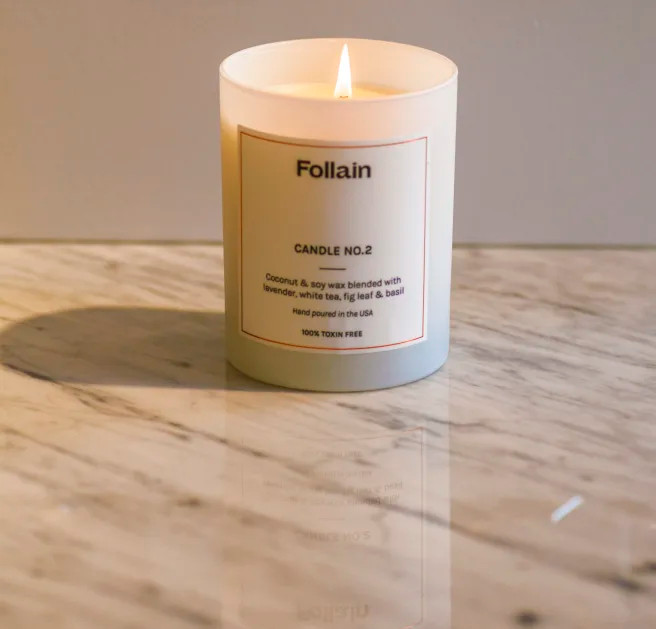
| Burn time | 65 – 70 hours |
| Wax | Soy and Coconut Oil blend |
| Wick | 100% unbleached cotton |
| Scent | Essential oils |
| Cost | $38 |
| Where to Buy | Follain.com |
Follain’s CANDLE NO. 1 and CANDLE NO. 2 are made with a blend of soy, coconut, and cottonseed oils. The scent is made from a blend of natural essential oils and housed in a recyclable glass container.
The scent of these candles is subtle, which is excellent for those looking for a pleasant scented candle that isn’t overwhelming. Follain’s candles are hand-poured in the USA, with a burn time of approximately 65-70 hours.
Mrs. Meyer’s
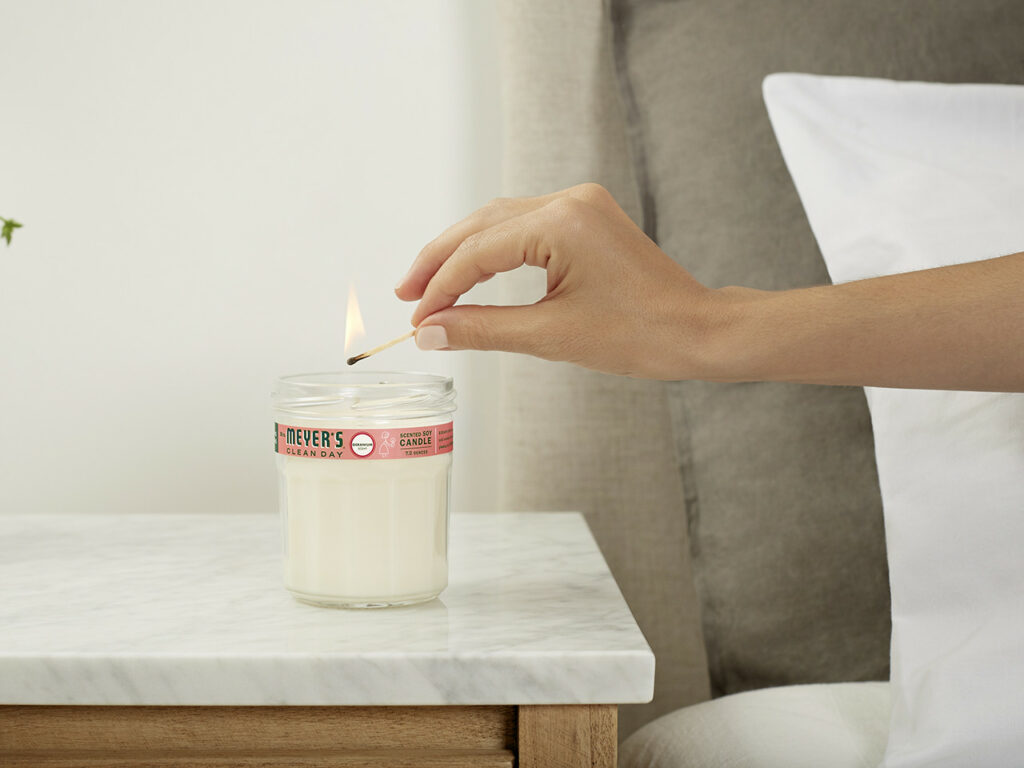
| Burn time | 65 – 70 hours |
| Wax | Soy and Palm Oil blend |
| Wick | 100% unbleached cotton |
| Scent | Essential oils |
| Cost | $9.99 |
| Where to Buy | Brand’s Website |
Mrs. Meyer’s Clean Day Soy Candles are made with a vegetable oil blend of soy wax and hydrogenated palm oil and are scented with a mix of essential oils and safe synthetics. The brand is completely transparent about their ingredients, and a full list (including fragrance ingredients) can be found on the website.
The Mrs. Meyer’s brand is primarily known for its cleaning products, which are all made with plant-derived ingredients and essential oils.
While their candles do contain some safe synthetics, they’re still a good choice for those looking for a scented candle made with mostly natural ingredients.
These candles come in a range of (at the time of writing) 35 pleasant scents, like lavender and lemon verbena. They’re also affordable, with a burn time of approximately 25 hours.
Nette
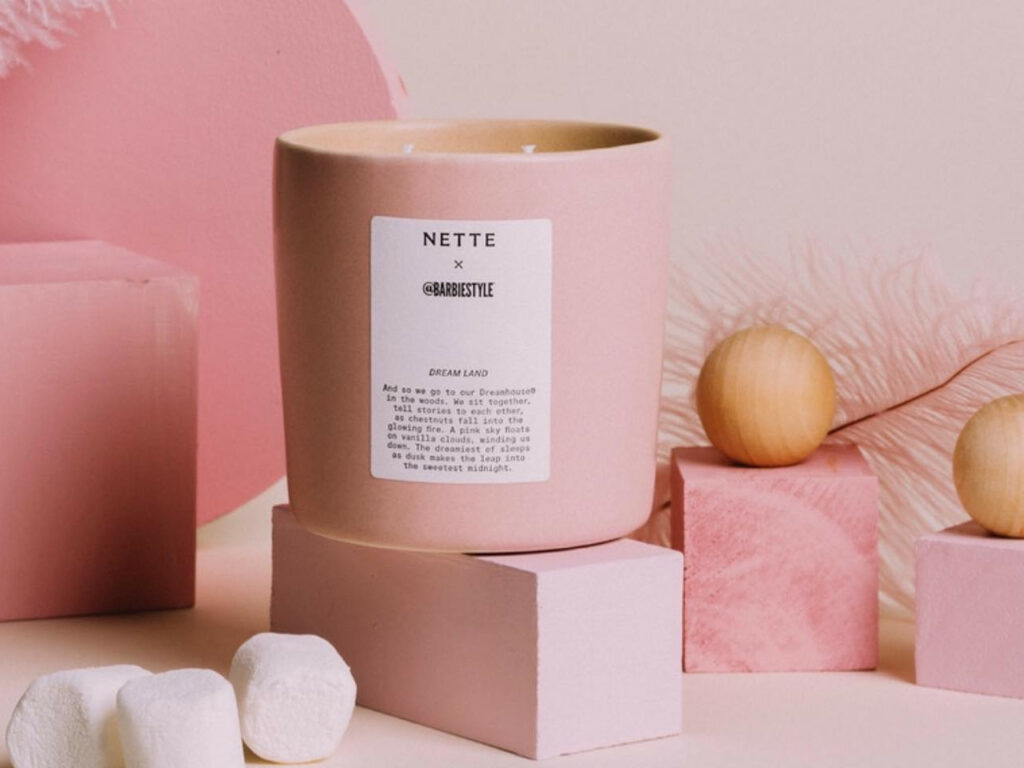
| Burn time | 55 – 60 hours |
| Wax | Soy, Coconut and Palm Oil Blend |
| Wick | GOTS-certified organic cotton wick |
| Scent | Essential oils + safe synthetics |
| Cost | $68 – $82 |
| Where to Buy | Brand’s Website |
Nette’s candles are on the expensive side but a great choice for those looking for a great luxury scented candle with safe ingredients.
The wax base is made from a blend of coconut wax, soy wax and RSPO-certified palm wax. Each candle is poured into a glass vessel handmade in Italy, and they come in a range of 15 different scents.
Packaging is made from 100% recycled shoeboxes and printed with seaweed ink, while the wick is the first candle made with a GOTS-certified organic cotton wick.
Everspring

| Burn time | 25 hours |
| Wax | 100% Soy Wax |
| Wick | Paper and Cotton |
| Scent | Essential oils + Plant Extracts |
| Cost | $5.99 |
| Where to Buy | Target |
These candles are available exclusively at Target and are an excellent value for a 100% soy wax candle fragranced with essential oils.
Everspring’s candles are by far the cheapest on our list, making them a great choice for the budget-minded conscious consumer.
There is a selection of 10 different scents, ranging in size from 5.5 oz to 8 oz candles. The 5.5 oz candle has an estimated burn time of 25 hours, and the wick is made from a mixture of paper and cotton.
If you’re a fan of Target and looking for an inexpensive, non-toxic scented candle, these are a good choice.
Fabulous Frannie
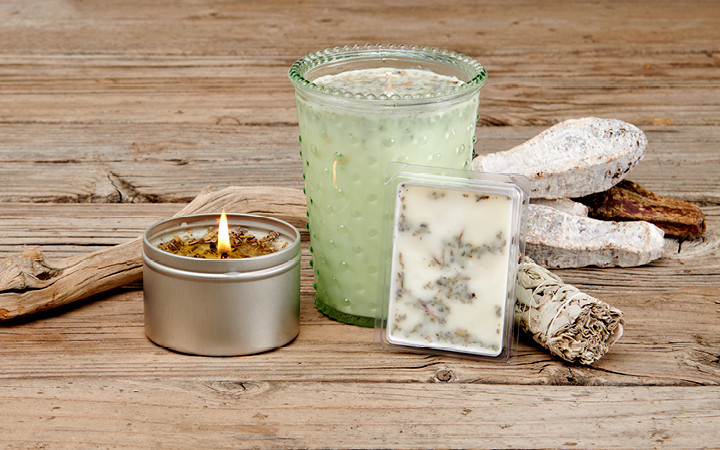
| Burn time | 25 – 50 hours |
| Wax | 100% Soy Wax |
| Wick | Cotton |
| Scent | Essential oils |
| Cost | $8.95 – $17.50 |
| Where to Buy | Brand’s Website |
Fabulous Frannie offers an extensive line of products, from their essential oils, roll-ons, herbal soaps, lip balms, and of course, scented candles. Fabulous Frannie candles come in either a recyclable glass jar or tin
The non-toxic candles on offer from Fabulous Frannie are made from 100% soy wax with a cotton wick and are scented with essential oils. Each candle lists the essential oil blend used so that you can choose exactly the right combination for you.
Niveaya
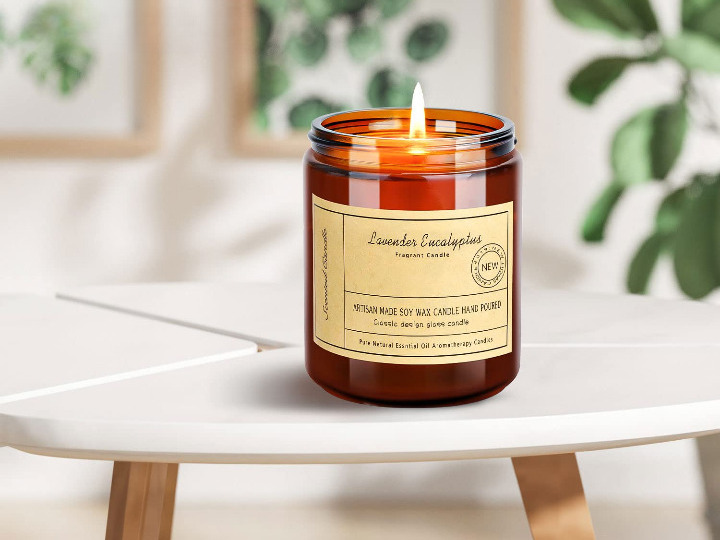
| Burn time | 40 hours |
| Wax | 100% Soy Wax |
| Wick | Cotton |
| Scent | Essential oils |
| Cost | $13.99 |
| Where to Buy | Amazon |
Niveaya offers only a single non-toxic candle, but it comes highly recommended. It’s made from 100% hand-poured soy wax with a cotton wick and is scented with natural essential oils of lavender and eucalyptus.
It has an estimated burn time of 40 hours and comes in a recyclable glass container with a lid.
Sana Jardin
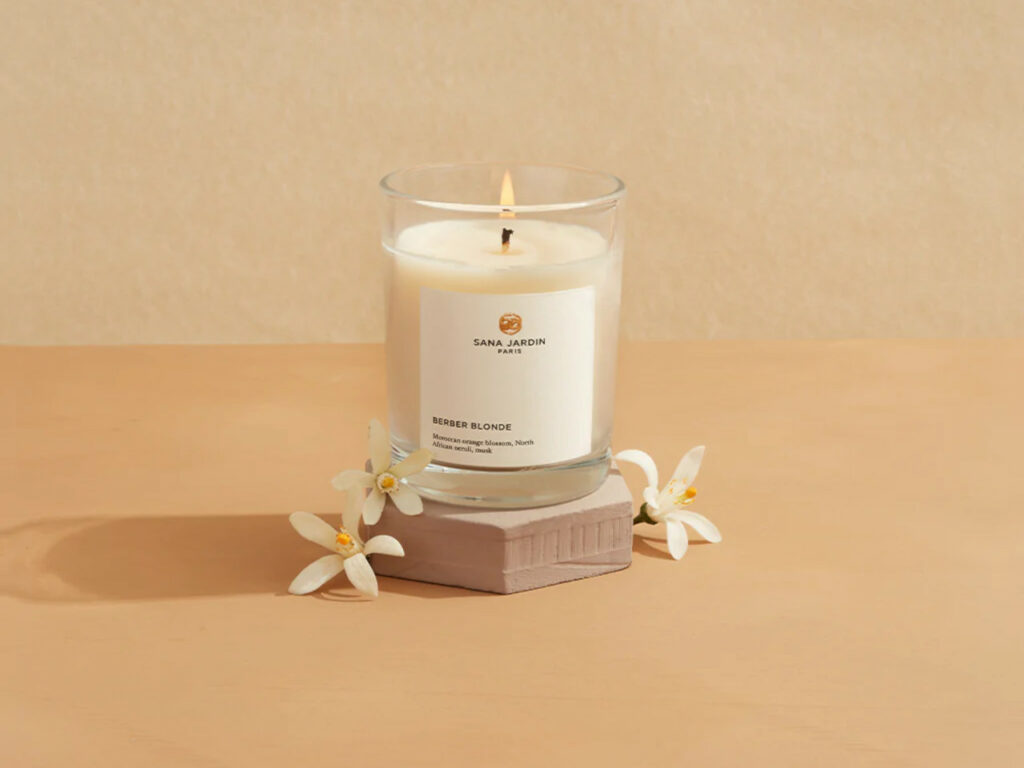
| Burn time | 40 hours |
| Wax | 100% Vegetable Wax |
| Wick | Cotton |
| Scent | Essential oils |
| Cost | $65 |
| Where to Buy | Brand’s Website |
Sana Jardin is a socially-conscious fragrance house that primarily offers perfumes but also carries a line of high-quality non-toxic scented candles. They’re made from 100% vegetable wax and scented with natural essential oils from Morocco.
Sana Jardin is driving social change by training the indigenous Moroccan women who harvest the flowers used to produce the essential oils. Along with two other partners, they created a co-operative in Morocco that helps women produce and sell products from the waste produced from the production of essential oils.
Heretic
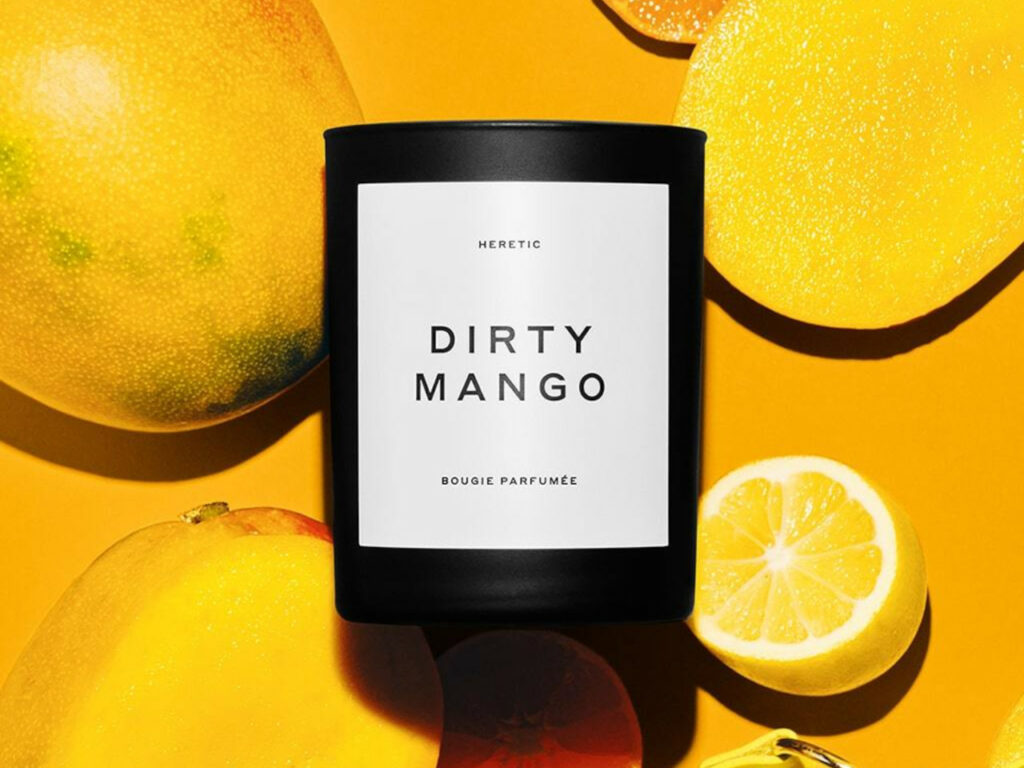
| Burn time | 40 hours |
| Wax | 100% Vegetable Wax |
| Wick | 100% Unbleached Cotton |
| Scent | Essential oils |
| Cost | $55 |
| Where to Buy | Brand’s Website |
Heretic is another perfume house offering a line of luxury soy wax candles incorporating the same scents their popular perfumes use.
This line of luxury soy wax candles comes in a range from coconut to vanilla, and is scented with a blend of essential oils and safe synthetics. The ingredients list of all fragrance is 100% transparent and can be found on the website.
Like any of the best non-toxic candles, Heretic’s candles use an unbleached cotton wick and are hand-poured in the USA.
Skylar

| Burn time | 40 hours |
| Wax | Soy and |
| Wick | 100% Unbleached Cotton |
| Scent | Essential oils + safe synthetics |
| Cost | $45 |
| Where to Buy | Brand’s Website |
Skylar creates a large line of perfumes and scented candles fragranced with essential oils and safe synthetics.
Skylar is 100% transparent about their ingredients, and a full list of the fragrance ingredients can me found on the product listings on the website. Every Skylar candle is made from a soy and coconut wax blend with a burn time of 45 hours.
The cardboard boxes on Skylar candles are made from FSC (Forest Stewardship Council) certified paper.


